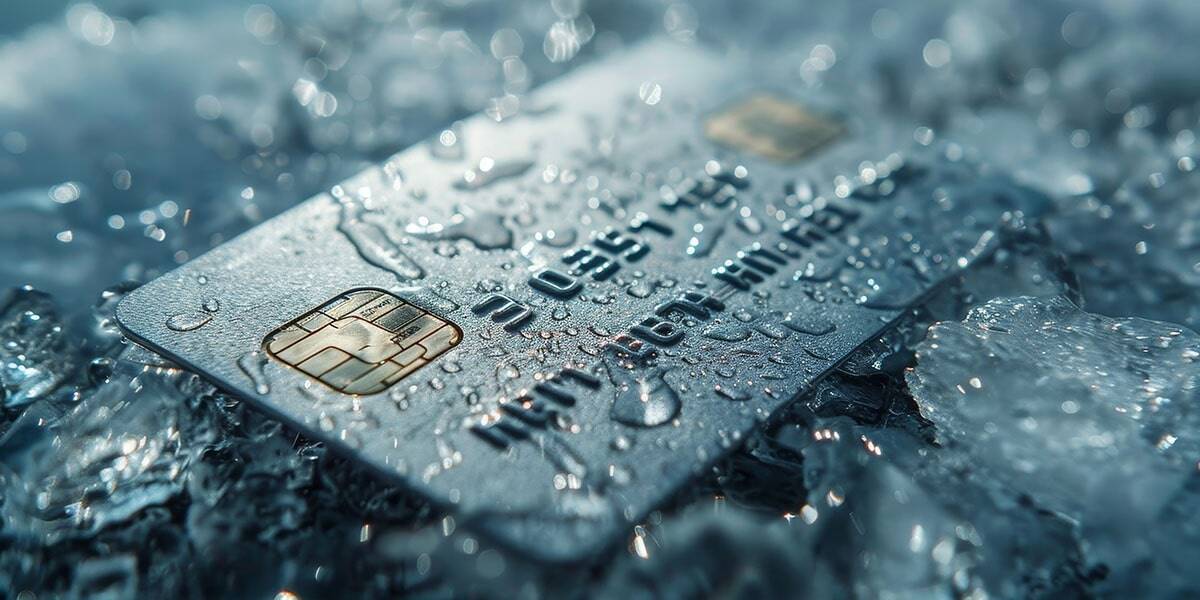How to Freeze Your Credit

Major data breaches continue to make headlines, but there are many more happening every day, which means consumers must stay vigilant and prepared to act.
According to a study by the University of Maryland, cyberattacks occur on average every 39 seconds, meaning someone falls victim to a data breach every 39 seconds. In 2023, the number of reported data breaches in the U.S. reached a record 3,205 – a staggering 78% increase from 2022.
With this stolen information, fraudsters can open credit cards or take out loans in your name, causing significant damage to your credit history. However, by freezing your credit, you can help safeguard your credit score by blocking unauthorized access to your credit report.
Keep reading to learn more about credit freezes, how they work and how they can help you prevent identity theft.
What exactly is a credit freeze – and how does it work?
A credit freeze blocks lenders from accessing your credit file, which can help prevent fraud. The three major credit bureaus – Equifax, TransUnion and Experian – each have a separate file on you, so you’ll need to freeze your credit with all three.
Once frozen, your credit file is restricted, meaning lenders can’t see your information. However, your credit score and existing accounts won’t be affected.
The goal of a credit freeze is to stop scammers from opening new credit lines in your name. Even if someone tries to apply for credit using your information, the lender will likely deny the request because they can’t access your credit file. Keep in mind, though, that a freeze won’t protect your current credit lines or stop identity theft.
Your credit will stay frozen until you decide to unfreeze it. If you’re freezing your credit due to identity theft, be sure to report the theft to the Federal Trade Commission (FTC) and your local police.
What to expect from a credit freeze
When you freeze your credit, you’re requesting the credit bureaus to place a security label on your file, indicating it’s frozen. This usually takes about 24 hours to take effect. While the freeze blocks most creditors from accessing your information, certain entities – like your current lenders and collection agencies – can still view your file.
If you want to apply for new credit while your file is frozen, you’ll need to temporarily lift the freeze. Otherwise, lenders are likely to deny your application, even if it’s legitimate.
In 2018, a federal law made it free to freeze your credit in all states, but the process involves a few steps:
- Decide if you need a credit freeze
People usually freeze their credit after identity theft, a data breach, or spotting suspicious activity on their credit report. It’s crucial to regularly check your credit report so you can catch any signs of fraud. - Contact all three credit bureaus
To fully protect your credit, you’ll need to freeze your report with all three bureaus: Equifax, Experian and TransUnion. Freezing just one won’t secure your entire credit file. - Choose how to freeze your credit
Each bureau offers three ways to freeze your credit:- Online: The quickest method. Visit each bureau’s website and follow the steps to freeze your credit.
- By Phone: Call the bureaus directly. They’ll verify your identity before processing your request.
- TransUnion: 888-909-8872
- Equifax: 800-685-1111
- Experian: 888-397-3742
- By Mail: Send your request to each bureau’s address, along with the necessary documents like a copy of your ID and a recent utility bill.
- Set up a secure PIN
After verifying your identity, the credit bureaus will give you a PIN. This unique number is used to unfreeze your credit later or freeze it again if needed. - Monitor your frozen credit
Keep an eye on your credit even after freezing it. You can request free annual credit reports, but credit monitoring services offer continuous access. Some are free, while others might charge a fee.
Unfreezing your credit
If you need to lift a credit freeze, whether temporarily or permanently, you’ll need to contact each credit bureau where you have a freeze in place. Each bureau allows you to unfreeze your credit electronically or over the phone. If you were given a PIN when you froze your credit, you’ll need to provide it to lift the freeze.
Once you’ve completed the necessary steps, the freeze will be lifted, allowing lenders to access your credit information again. If you’re applying for a loan, you might choose to temporarily unfreeze your credit and then refreeze it afterward. Alternatively, you can permanently unfreeze your credit if you no longer need the protection.
Credit lock vs. freeze: What’s the difference?
You might be wondering about the difference between a credit lock and a credit freeze. While both prevent access to your credit file, there are some key distinctions.
A credit freeze requires contacting the credit bureaus by phone, online or by mail, and completing a few steps. It’s free and legally protected by federal law.
On the other hand, a credit lock is typically faster and easier but usually comes with a fee. To use a credit lock, you often need to sign up for a paid credit monitoring service, which gives you access to an app where you can lock and unlock your credit file without needing a PIN.
The main downside of a credit lock is that it doesn’t provide the same legal protections as a credit freeze. Federal law grants you the right to freeze your credit for free, add fraud alerts, and even freeze the credit of minors or incapacitated individuals.
Fraud alerts are another layer of protection; when activated, they require creditors to contact you before approving any loan applications in your name. These alerts typically last one year but can be extended.
Bottom line
Freezing your credit is a powerful tool to protect yourself from identity theft and fraud, especially in the wake of major data breaches. It’s free, legally protected and ensures that your credit file remains secure from unauthorized access.
While it might require a few extra steps to manage, the peace of mind it offers is well worth the effort. If safeguarding your financial security is a priority, a credit freeze is one of the best options available.
Advance Capital Management is a fee-only RIA serving clients across the country. The Advance Capital Team includes financial advisers, investment managers, client service professionals and more — all dedicated to helping people pursue their financial goals.
Source: How to Freeze Your Credit




